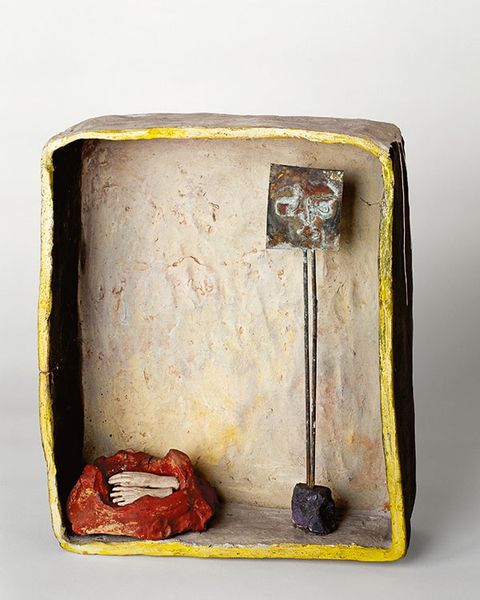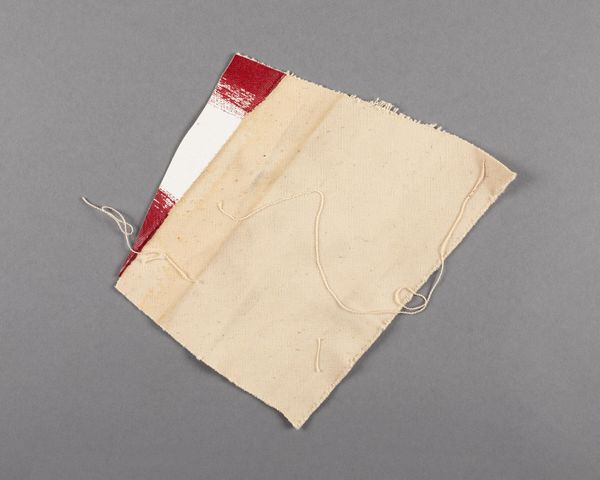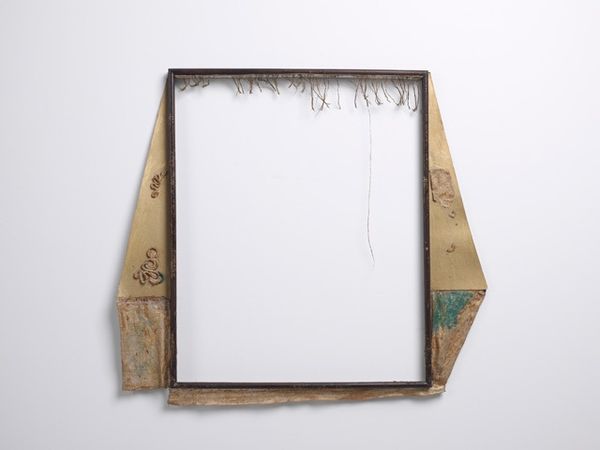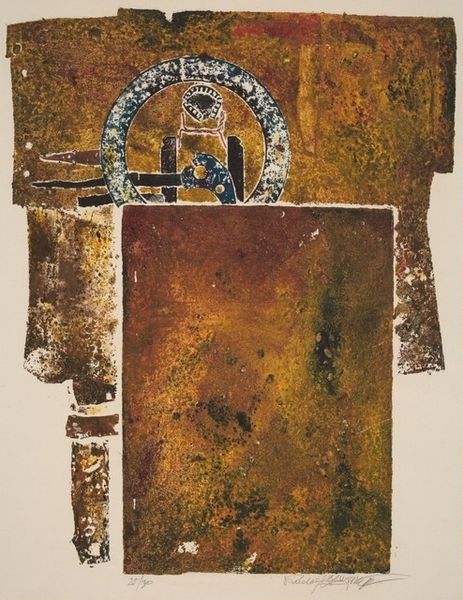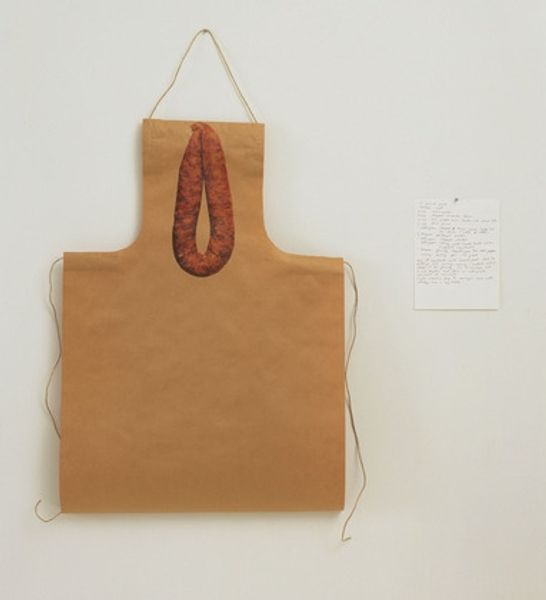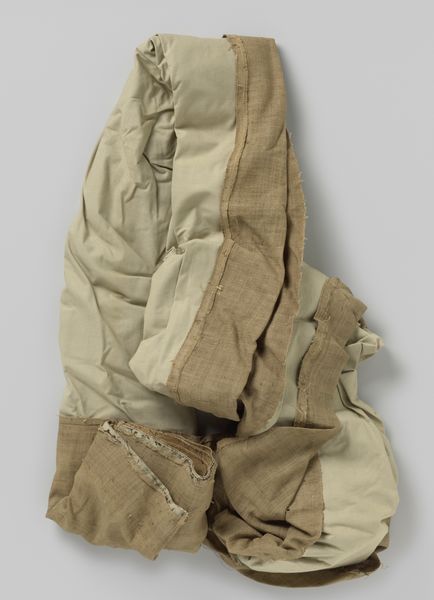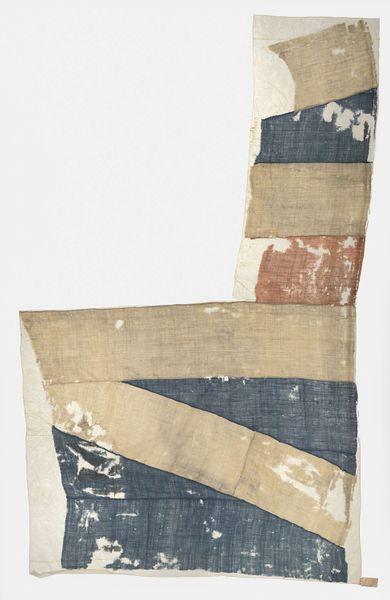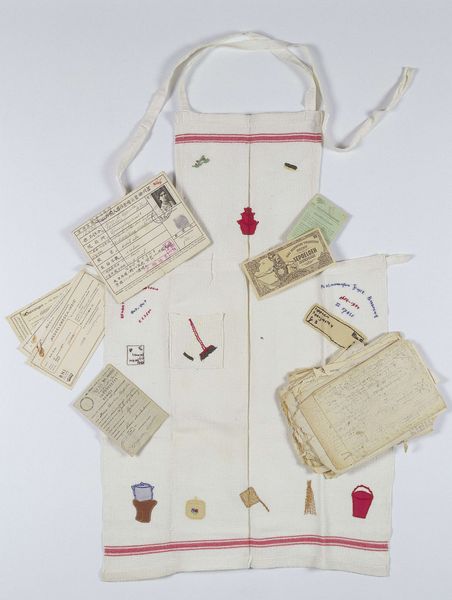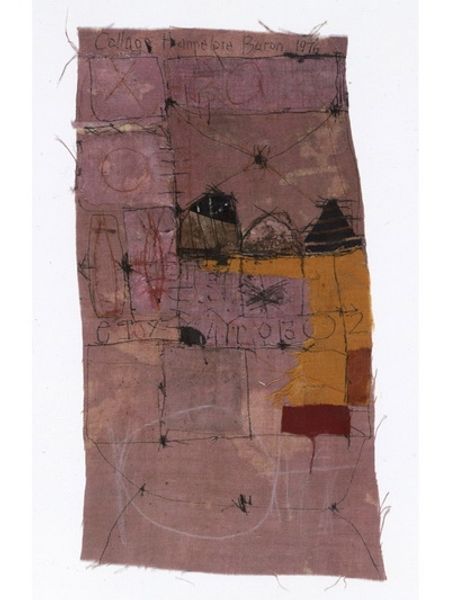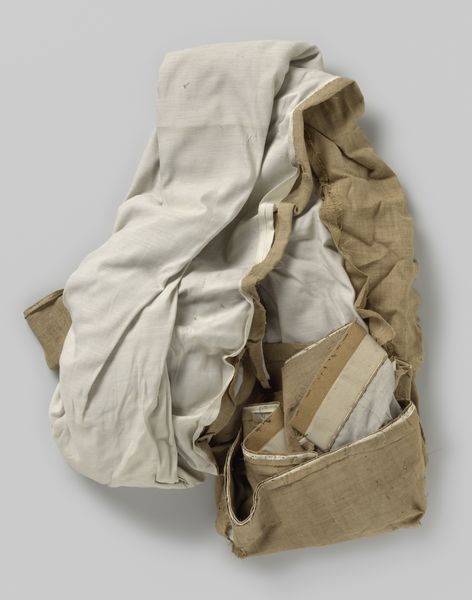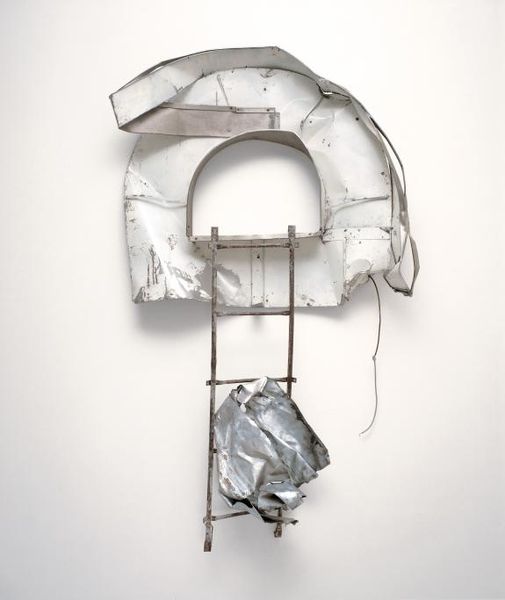
mixed-media, assemblage, textile, found-object, installation-art, combine
mixed-media
muted colour palette
assemblage
appropriation
textile
found-object
text
neo-dada
black-mountain-college
installation-art
abstraction
pop-art
combine
Copyright: © 2019 Robert Rauschenberg Foundation. All right reserved.
Curator: When I first encountered Robert Rauschenberg’s "Dylaby" from 1962, I felt like I was peering into the soul of American consumerism itself. What hits you first? Editor: The raw texture! All that faded canvas, the dull metal glints… it feels almost like an archaeological dig into recent history. The found objects speak volumes about the discarded remnants of daily life, the waste of a postwar society, reconfigured into art. Curator: It's certainly an echo of daily life. "Dylaby" really pushes the boundaries of medium with its 'combine' style: that Coca-Cola can collaged onto… is that a wooden ironing board form? Editor: Yes, nailed onto a heavily worked canvas, already aged! That can wasn't intended to last, yet there it is, stubbornly resisting decomposition. Juxtaposed with the domestic and handmade aspects – a bit of textile hanging from the composition's right side– Rauschenberg's asking questions about the inherent value of material goods, their life cycles and ultimate transformation. Curator: He really is. And those splashes of white paint almost become celebratory, as though baptizing the objects anew. There's a feeling of freedom, like he’s liberated them from their mundane purposes. Don’t you feel a sense of liberation, as if he’s breathing new life into what was once obsolete? Editor: I'm getting something else entirely... something deeply rooted in production! See how those objects are hung precariously close to coming loose. The means of their production contrasts heavily to the ‘finer’ arts dominating exhibition spaces in the early sixties. Think also about their mass distribution versus the labor involved to display such an art piece. It’s an economic statement as much as an aesthetic one, almost a visual critique of Pop Art's celebration of commerce. Curator: Well, I still think he's got a soft spot. It’s chaotic, but there’s also a tender touch, a poetic grace in the decay. Maybe that’s just me seeing the romantic side of things… Editor: Maybe! But next time you see it, think of the hands involved—those that made the coke can, hung it, the history within materials! Now that, to me, is romantic!
Comments
No comments
Be the first to comment and join the conversation on the ultimate creative platform.
